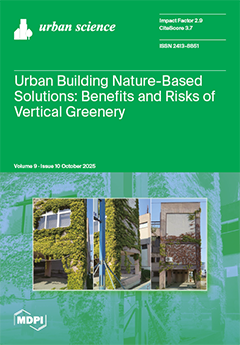Ecosystem services play a crucial role in sustaining human life, providing numerous benefits that are indispensable for our well-being. However, these vital functions are increasingly compromised by land use changes that have been instigated by human activities. This study aims to evaluate the spatiotemporal variability of ecosystem service value (ESV) within the urban agglomeration located on the northern slope of the Tianshan Mountains over a historical period stretching from 1990 to 2020, utilizing land use data to conduct a thorough analysis. Subsequently, the Future Land Use Simulation (FLUS) model was employed to forecast ESV in 2030 under three developmental pathways: Ecological Protection Scenario (EPS), Cultivated Land Protection Scenario (CLPS), and Natural Development Scenario (NDS). The evaluation incorporated six primary land classes: cultivated land, forest land, grassland, water bodies, construction land, and unused land. The FLUS model was validated with strong accuracy (overall accuracy = 0.97, Kappa = 0.94). ESV was estimated using the value coefficient method based on equivalent factors, adjusted with a local economic coefficient for crop production. All values are expressed in constant 2020 CNY without further price normalization. Our results show that between 1990 and 2020, cultivated land expanded by 27.18% (17,721 to 22,538 km
2) and construction land increased by 75.91% (1926 to 3388 km
2), while grassland decreased from 63,502 to 59,027 km
2 and unused land declined from 106,292 to 104,690 km
2. Minor changes occurred in forest land and water bodies. Total ESV decreased from 679.06 × 10
8 CNY in 1990 to 657.67 × 10
8 CNY in 2020, a decline of 3.15%. Regulating, supporting, and cultural services all decreased, while provisioning services increased. Spatially, vegetated areas functioned as ESV hot spots, whereas construction-degraded areas were identified as cold spots. Scenario projections for 2030 show that under the CLPS and NDS, ESV would further decline by 11.49 × 10
8 CNY (−1.75%) and 10.18 × 10
8 CNY (−1.55%), respectively. In contrast, the EPS is projected to increase ESV by 4.53 × 10
8 CNY (+0.69%), reaching 662.20 × 10
8 CNY.
Full article





